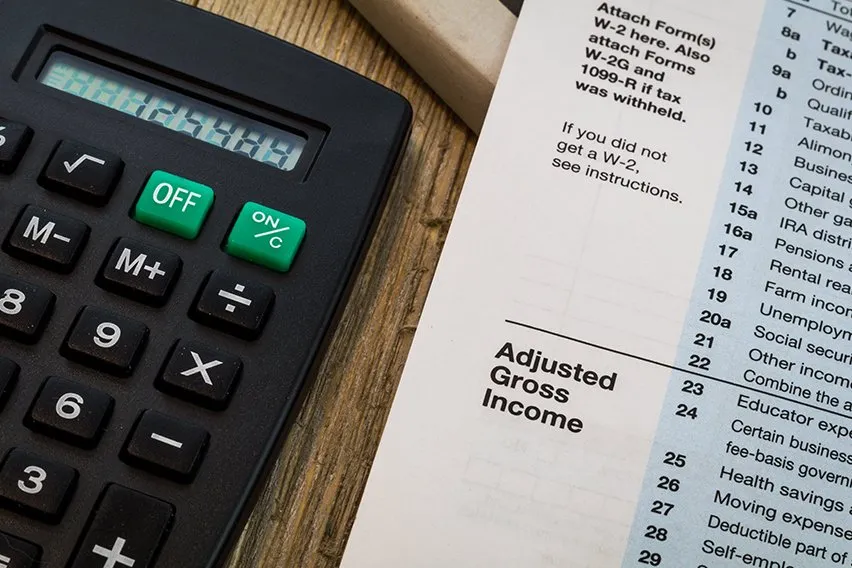Top 3 Online Depreciation Calculator to Calculate Depreciation

One of the fun parts of running a successful business is buying the new assets you need to keep growing. But after you’ve bought that lovely, shiny new piece of equipment, it immediately starts to lose value. Each year it’ll be worth less and less because of wear and tear over time.
Depreciation is the method of accounting for this drop in asset value. And it’s a notoriously fiddly accounting process.
Thankfully, there are free online depreciation calculators that do the maths bit for you. We’ve narrowed a very wide selection down to 3. Now you can choose the one that’s best suited to your needs.
Here’s What We’ll Cover:
Quick Definition of Depreciation
Top 3 Free Online Depreciation Calculators
Quick Definition of Depreciation
In the UK, there are 2 ways to work out the depreciation of your assets: straight line depreciation and reducing-balance depreciation. We know the calculator’s going to do the working out but, in the manner of your secondary school maths teacher, you should ‘understand the thinking behind the formula’.

Straight Line Depreciation
In this calculation of depreciation you take how long something is expected to last and split the initial purchase price over that many years. You’re not actually moving the money around, but your balance sheet will show this changing value over the lifespan of the asset. This is because it’s now worth less than you originally paid for it.
For example, you buy a laptop for £1500. You expect its ‘useful life’ to be 5 years. 1500 / 5 = 3. So the depreciation is £300 per year.
Reducing-Balance Depreciation
This is sometimes called the declining-balance depreciation method. The asset depreciates by a set percentage each year. This is called the depreciation rate. And the amount of depreciation decreases each year, until the asset reaches the end of its useful life. This is calculated from the previous year’s book value (minus depreciation), not the original purchase price.
This makes much more sense in an example.
£1500 laptop, depreciating at a rate of 20% each year, over 5 years. Showing beginning cost, 20% of that beginning cost, the balance after deducting depreciation.
- Year 1: £1500 – £300 (20%) = worth £1200
- Year 2: £1200 – £240 = £960
- Year 3: £960 – £192 = £768
- Year 4: £768 – £154 = £614
- Year 5: £614 – £123 = £492
You don’t just record this on your balance sheet. Depreciation is also part of your profit and loss account, as a daily running cost, because the business has used the asset’s value to generate profit.
You can read through our more detailed explanation here.
Top 3 Free Online Depreciation Calculators
Thankfully, this is one area where technology really is a time-saver. Instead of ploughing through the actual equations you can use one of many free online calculators. Here’s our top 3.
GoodCalculators.com
GoodCalculators.com put their Straight Line Depreciation Calculator and Percentage (Declining Balance) Depreciation Calculator on two separate pages, but we’re counting this as one entry in our top 3.
As you can see, they follow the same format. There is a concise definition of the calculation’s purpose followed by a written example that’s shown in the calculator.
The results are displayed clearly in a Depreciation Schedule table, which shows your figures over the next 5 years.
The calculators’ algorithm formulas are listed at the bottom of each page. This is the kind of extra detail we appreciate!
All you have to do is enter your information into the 3 fields and your 5 year depreciation schedule appears before your eyes.
All in all, these two calculators are easy to use. They promote understanding by having just the right amount of information, presented clearly. Although, if you needed more support, there are no signposts to more detailed explanations.

iCalculato
This straight line depreciation calculator starts with a written definition of what ‘straight line depreciation’ is, with a clear example. Unfortunately this isn’t pre-filled into the calculator’s fields, a missed opportunity to demonstrate it to users.
There is a Depreciation Schedule table, but initially you can only see its headings. The instructions say that it will appear the ‘first time you click the button’. As soon as you’ve entered your information, the table starts to appear. And what we really like about this one, is that you can set your depreciation schedule for up to 12 years.
Underneath this calculator is a page of information about the straight line formulas the calculator uses, the benefits of using a calculator, factors influencing depreciation, and the pros and cons of the Straight Line method.
They only link to their Declining Balance Depreciation Calculator right at the end of the page. This makes sense in the context of the surrounding text, but does mean you have to hunt for it. Perhaps a quick link at the top would be more user friendly.
The layout of this calculator is the same, except they complete the fields of the calculator with their example information. This is a helpful way to show how the calculator works.
Online-Calculators.co.uk
This page presents both the Straight Line Depreciation Calculator and the Reducing Balance Method Depreciation Calculator on the same page.
There’s one line to explain the purpose of the Straight Line formula and no definition of the Reducing Balance method. There are no written-out examples, but both calculators’ fields are filled in to show you what to do.
The Reducing Balance Depreciation Calculator shows you the depreciation amount and writing down value for the following 5 years.
This one’s for people who just want to know the numbers. There’s no following information about what the calculations mean, or the formulas used. It does offer people the option to use this coding on their own site, but neither calculators’ link is currently working.
RELATED ARTICLES

 What Is Net Pay?
What Is Net Pay? What Is Gross Pay? Definition, Examples & Calculation
What Is Gross Pay? Definition, Examples & Calculation What Is Finance: Definition & Types of Finance
What Is Finance: Definition & Types of Finance What Does an Accountant Do: Role, Types, and Skills Required
What Does an Accountant Do: Role, Types, and Skills Required How to Set Up a Direct Debit for Payments
How to Set Up a Direct Debit for Payments Financial Accountant vs Management Accountant
Financial Accountant vs Management Accountant